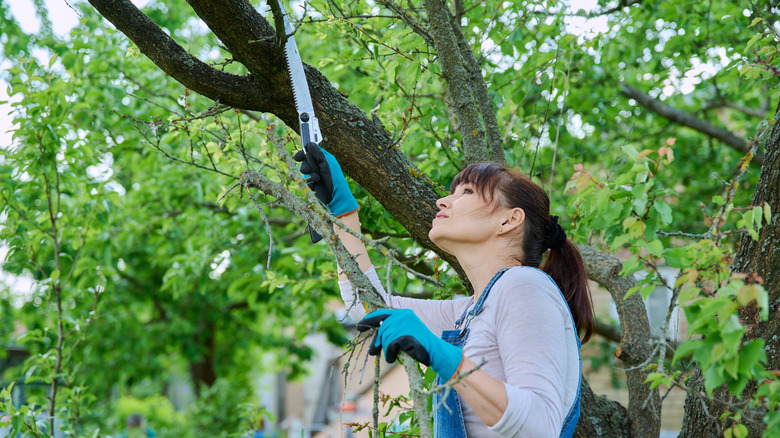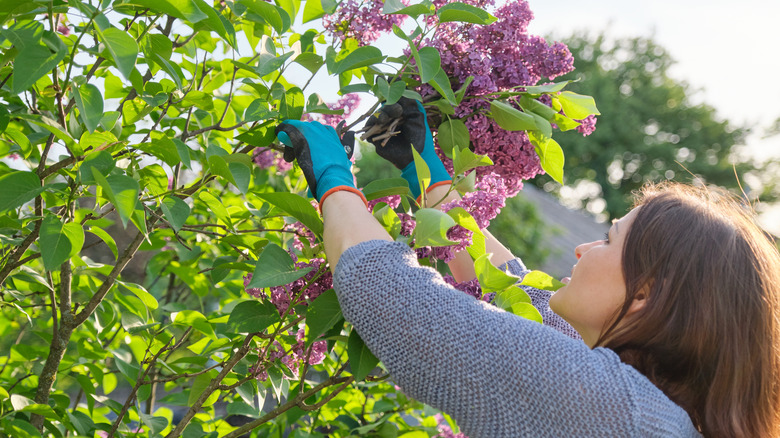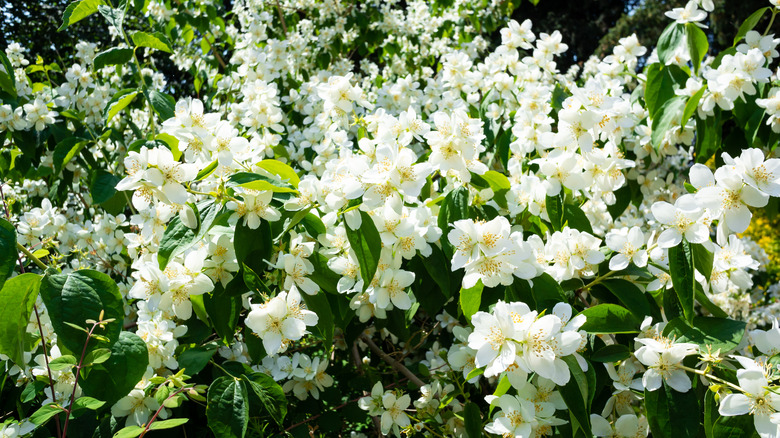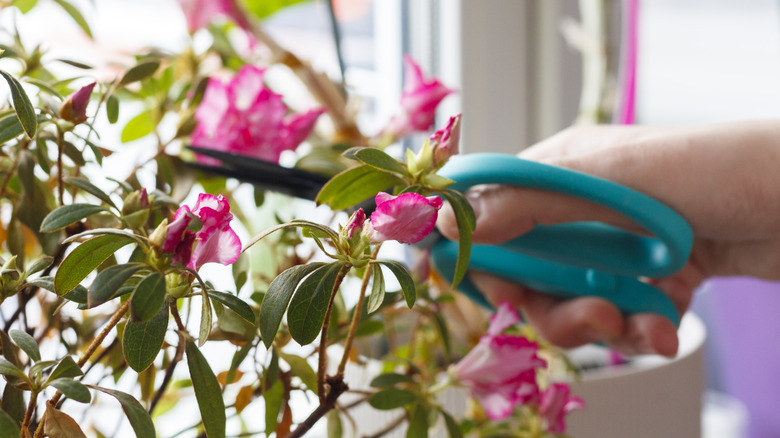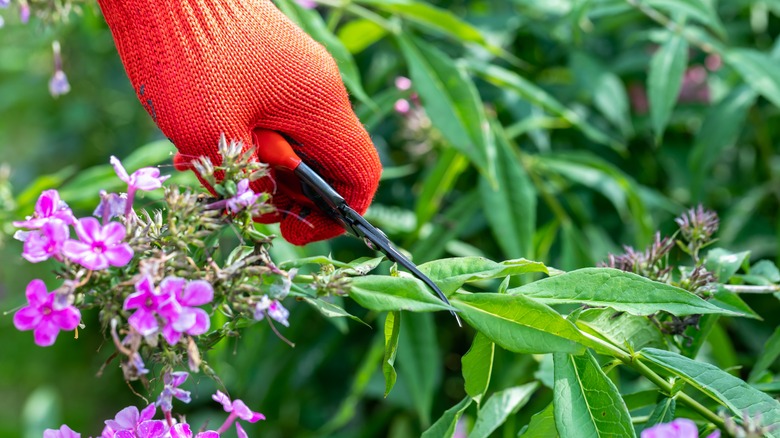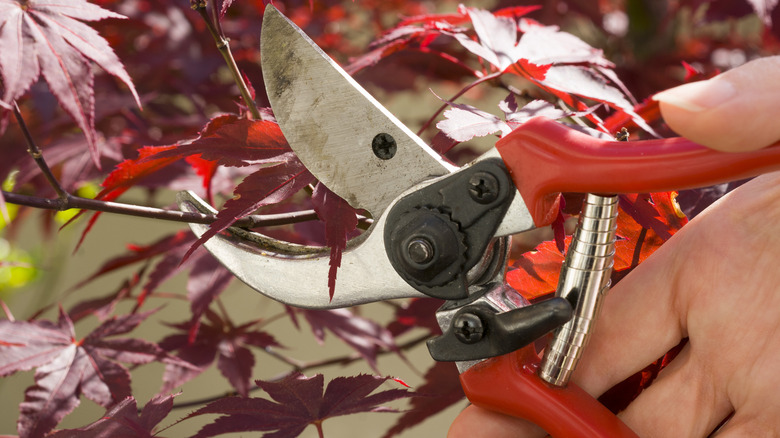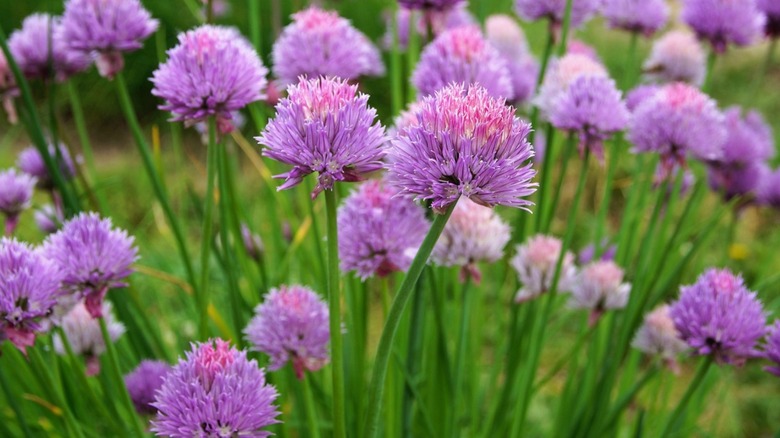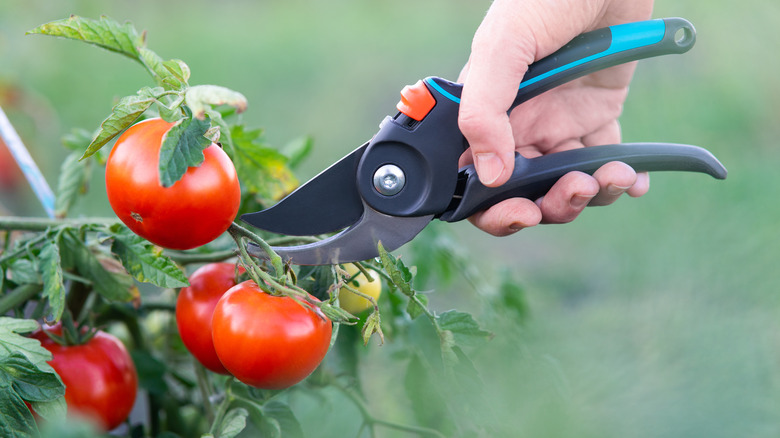8 Plants And Trees That Need A Summer Pruning For Healthy Growth
Garden maintenance never stops, even in the peak of bloom and harvest season in the summer. Though it may surprise some, pruning can be key in the summertime. Pruning provides a myriad of pros, including renewed growth, disease prevention and removal, and improved energy distribution, just to name a few. In general, it's thought that pruning is best done in a plant's dormant period, usually in the autumn, winter, or early spring, because pruning can cause dehydration during hot, dry months, which is why many would think twice before pruning in the summer. For many plants though, it's ideal, because unlike dormant season pruning, summer season pruning can slow new growth rather than accelerate it, and help to prevent any plants from overrunning your garden.
It isn't always clear which plants would do well with some grooming and which would suffer, so we've put together a handy guide of which significant flora benefit from summer pruning, as well as when to prune them, how pruning affects the plant, and why it's an important part of your summer gardening routine.
1. Lilac
The super hardy Lilac (Syringa vulgaris) shrub is one of the plants that most benefits from a summer trim. Lilacs bloom in the spring, and it's best to prune them immediately afterward in the early weeks of June. This will allow you to reshape the bush and remove any dead or diseased branches, yes, but it is especially key because lilacs set their new buds for the following year right after flowering. If you prune the shrub back later in the year, you'll be eliminating these fresh buds, meaning you'll have no blossoms the following year.
2. Mock orange
Mock orange (Philadelphus) shrubs offer some of the best-smelling blossoms of the year, and you need to try summer pruning to keep them coming back. In the summer, just after flowering, take time to remove any errant branches to keep a nice-looking shape and encourage new blooming wood growth. You don't need to do this every summer, just as needed. Cut down just one out of every five old branches to thin out the shrub without totally depleting its shape.
3. Azaleas
Azaleas (Rhododendron spp.) benefit from summertime pruning just as lilacs do — pruning helps to shape the plant into an attractive silhouette and delivers all of the usual benefits, as well as ensuring that you don't cut away new buds for next year's growth by cutting in autumn. Prune your azalea shrub within three months after flowering, typically in late spring and early summer. Do keep in mid that azaleas have a naturally pleasing shape and don't need to be heavily manipulated, so don't get too trim-happy with your pruning shears.
4. Garden phlox
Who doesn't love a patch of creeping phlox (Phlox stolonifera) in the garden, with its sprawling vines and abundant blossoms? But this stunning plant can quickly overwhelm your garden, so pruning in the summer is ideal when it gets out of control. In early June, you can remove a third to a half of stem height to manage your phlox, delay blooming, and encourage more flower heads. You should also try deadheading in the garden, which requires pinching off withered and dead flowers from the plant to prolong bloom time, as part of summer phlox pruning.
5. Magnolias
Magnolia (Magnolia grandiflora) trees absolutely stun in any garden, but if your magnolia is deciduous, meaning it sheds its leaves in the autumn, you need to be sure to prune it back in the mid-to-late summer when the leaves are fully unfurled. You'll want to cut away weak, dead branches, along with vertical shoots to allow your magnolia to grow back strong and healthy in the following years. Evergreen magnolias do not require pruning, so be certain which variety you have in your yard.
6. Maples
Many trees should only be pruned in the winter season, but maples (Acer) and other sappy trees aren't one of them. That's because maples produce the sticky sap that becomes syrup during the early spring, so when you cut into the branches during this period, the sap bleeds, which can weaken the plant and makes for messy branch removal. Instead, trim your maple tree from May to August to remove any errant, diseased, and otherwise unwanted branches and sculpt the tree to your desired shape.
7. Chives
What's better than a plant that you can eat and looks beautiful in the garden? Not much, which is why chives (Allium schoenoprasum) are a favorite for gardeners and chefs alike. Pruning it is essential because it can become invasive if left alone, but chive plants can be pruned repeatedly throughout the summer growing season, and you can eat your harvest! You don't need to be too precious about this, as chives are very hardy, but be sure not to cut too many stems at once, as this can kill the plant. Also keep an eye out for withering flowers to deadhead.
8. Tomatoes
Tomato plants (Solanum lycopersicum) may not come to mind when you think about pruning, but these plants also seriously benefit from some summer grooming. Prune tomato plants after the first flowers have opened, usually in late June or early July. This does require a little bit of know-how to ensure that you don't remove any essential parts of the plant, so be sure to follow our guide on how to prune your tomatoes. Pruning will help your plant efficiently distribute energy and improve fruit production.
